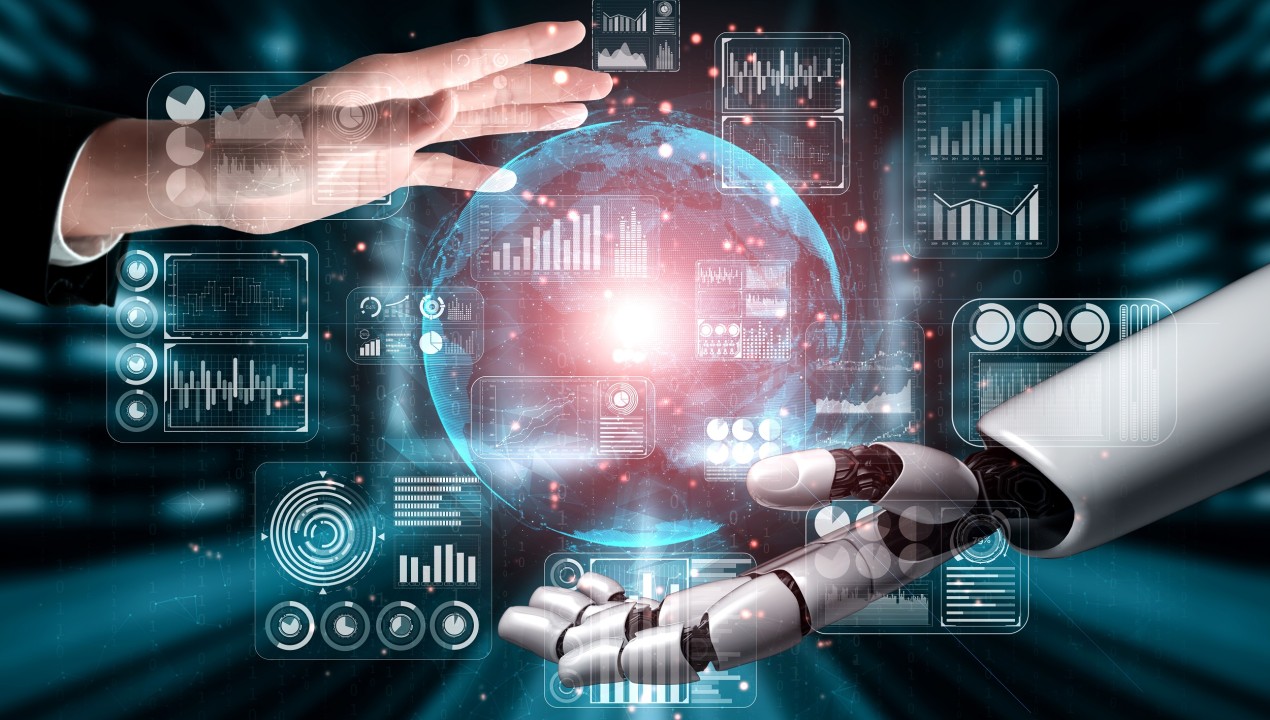Test YOUR Business in Minutes
Create your account and launch your AI chatbot in minutes. Fully customizable, no coding required - start engaging your customers instantly!
Introduction
"This is the third time this week," Maya mutters, tapping her keyboard with practiced precision. Behind her, massive screens display colorful visualizations of global transaction flows. Her AI assistant has already compiled a report, highlighting the suspicious patterns in red. Years ago, this would have taken a team of analysts days to spot. Now it happens in seconds.
The Silent War
In 2023 alone, fraud cost the global economy over $5.5 trillion. The battleground is everywhere: credit card transactions, loan applications, insurance claims, and increasingly, cryptocurrency exchanges.
"Most people don't realize they're protected by AI every time they swipe their card," says Dr. Raj Sharma, Chief Data Scientist at Mastercard. "The systems we've built analyze over 75 billion transactions annually, making split-second decisions about whether to approve or decline. And they're getting smarter every day."
I'm sitting in Mastercard's Technology Hub in New York, where Dr. Sharma shows me visualizations of their neural networks at work. The displays remind me of constellations, with bright nodes lighting up as patterns emerge from the sea of data.
Beyond Rules
"Rules are like locks," explains Sarah Chen, a former FBI cybercrime specialist who now runs her own security consultancy. "Once someone figures out how they work, they can pick them. What we needed was a lock that constantly changes its mechanism."
Enter machine learning. Rather than following explicit rules, modern AI systems learn from historical patterns, identifying subtle correlations that human analysts might miss.
At payment processor Stripe's headquarters in San Francisco, I'm shown a demonstration of their fraud detection system. The team feeds it a series of transactions, some legitimate, some fraudulent. The AI doesn't just spot obvious red flags—it notices that fraudulent transactions often come from accounts created on weekends, or tend to have slightly different typing patterns when entering information.
"Humans are creatures of habit," says Miguel Gonzalez, Stripe's Director of Risk. "Even the most careful fraudsters leave patterns. Our systems can detect keystroke rhythms, mouse movements, and even the way someone navigates through a website. These behavioral biometrics are nearly impossible to perfectly mimic."
The Human Element
"The AI is our first line of defense, but it's not infallible," says Jennifer Wu, a senior fraud analyst. "Sometimes legitimate transactions look suspicious, and sometimes fraud is so novel that the system hasn't seen anything like it before. We need human judgment to make the final call in those edge cases."
This hybrid approach—combining AI's processing power with human intuition—has proven remarkably effective. Visa reports that their AI-powered fraud detection system has helped prevent an estimated $25 billion in fraud attempts in the past year alone.
The Arms Race
"It's an arms race," sighs Dr. Emily Rosenberg, a cybersecurity researcher at MIT. "Every time we develop better defenses, they develop better attacks. The advantage is that defensive AI can learn from millions of legitimate transactions, while fraudsters have limited data to work with."
I watch as she demonstrates a new type of attack—a generative adversarial network (GAN) that creates fictitious but believable credit card usage patterns. The system is eerily effective, but still trips certain alarms in modern detection systems.
Test YOUR Business in Minutes
Create your account and launch your AI chatbot in minutes. Fully customizable, no coding required - start engaging your customers instantly!
Beyond Financial Services
At health insurance provider Anthem, AI systems scan millions of claims daily, looking for patterns that might indicate fraudulent billing practices by healthcare providers.
"Healthcare fraud costs American taxpayers about $300 billion annually," tells me Dr. Marcus Johnson, Anthem's Chief Analytics Officer. "Our systems have helped identify several organized fraud rings operating across multiple states. In one case, we found a network of clinics billing for procedures that were never performed, potentially saving hundreds of millions in fraudulent claims."
The Privacy Dilemma
"There's always a tension between security and privacy," admits Elena Vasiliev, a privacy advocate who previously worked on fraud detection systems at American Express. "The same techniques that can spot fraud can also be used for surveillance. We need to be careful about how much information we collect and how we use it."
Some companies are exploring techniques like federated learning, which allows AI models to be trained across multiple data sources without centralizing sensitive information. Others are investing in homomorphic encryption, which enables analysis of encrypted data without decrypting it first.
Looking Forward
The next frontier in fraud detection involves quantum computing and explainable AI—systems that can not only detect fraud but clearly explain why they flagged a particular transaction. This transparency will be crucial as regulations around AI decision-making tighten.
"Ten years ago, we were playing catch-up," Maya tells me as we walk to the elevator. "Now, we're starting to get ahead of the fraudsters. But it's not a battle we'll ever completely win. As long as there's money to be made, people will try to game the system."
She pauses before adding, "The good news is, our tools are getting better every day. And unlike the fraudsters, we can share information across the industry. Every attack makes all of us stronger."
As digital transactions continue to grow in volume and complexity, this invisible shield of AI protection will only become more important. The next time your credit card company texts to verify an unusual purchase, remember: it's just the visible tip of a technological iceberg, silently protecting your financial life around the clock.
Will AI fraud detection systems eventually make financial fraud a thing of the past? Or will we always be locked in this digital cat-and-mouse game, with ever more sophisticated attacks and defenses? One thing's certain—the future of financial security will be shaped as much by lines of code as by the people who write them.






